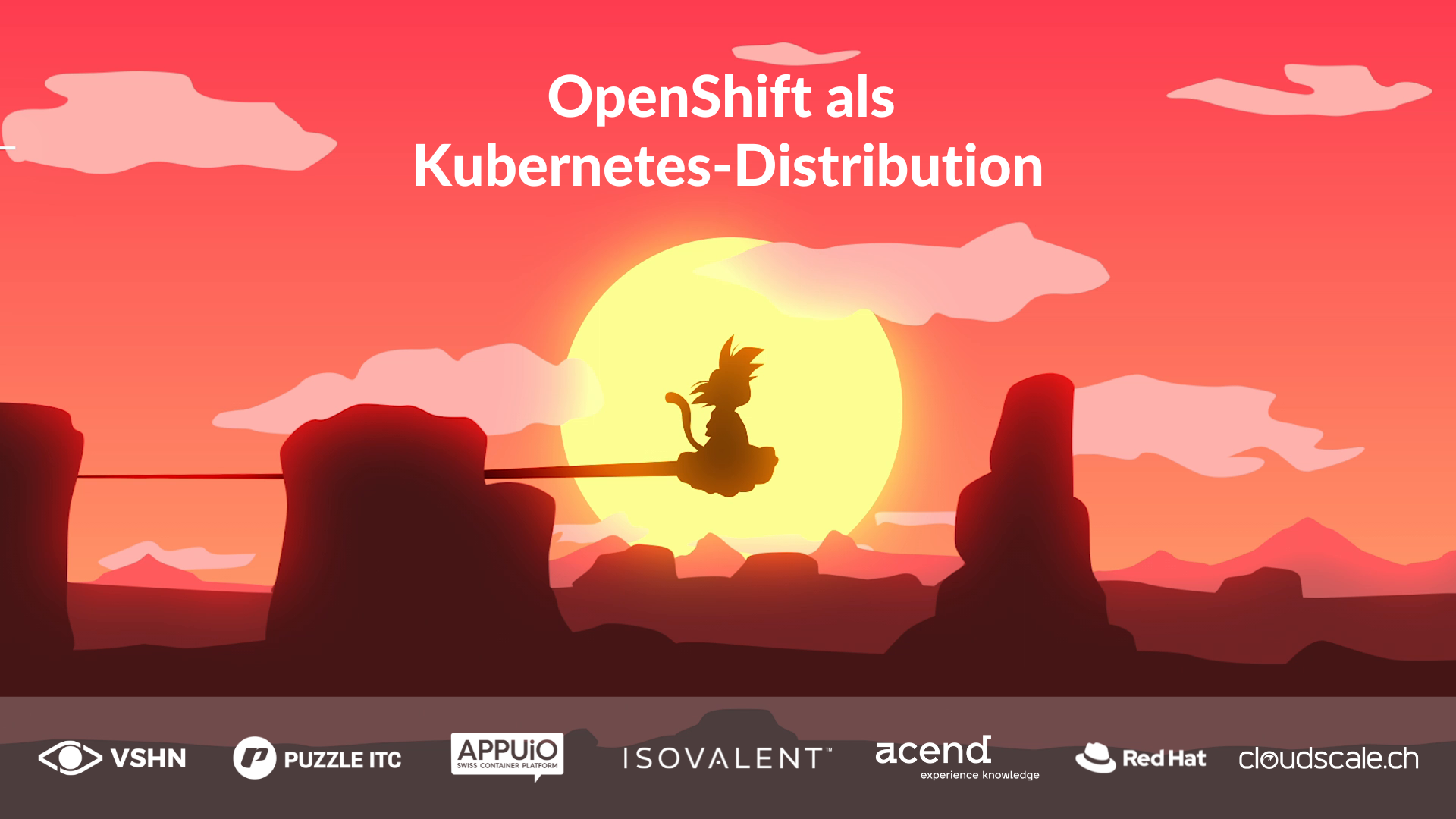OpenShift as Kubernetes distribution
7. November 2022
The Cyberweek offer includes a setup with the Kubernetes distribution OpenShift. Learn about the benefits of OpenShift and what the distribution includes.

OpenShift from Red Hat is an enterprise-grade Kubernetes distribution. Its goal is to provide a stable and secure Kubernetes-based platform for running containerized applications. OpenShift does this by leveraging an established Kubernetes version and supplementing it with additional features. Red Hat OpenShift supports in many topics around software development. The ecosystem around builds, source-to-image (S2I), and the Red Hat Container Catalog enables fast and secure development of applications to run in a container and then run on OpenShift. In addition to Kubernetes, OpenShift relies on other projects from the CNCF landscape for topics such as monitoring, logging, storage and service mesh.
Benefits at a glance:
- Advanced Cluster Management
- PaaS solution with image builds and pipelines
- Integrated solutions ready to use (monitoring, logging, storage, service mesh etc.)
- Full-stack support from operating system and container platform to middleware
- Strict default security policies
How much expertise in containerization is required from developers in the company for the use of OpenShift? If the developers in the company want to continue to focus only on application development despite the newly introduced container technology, the OpenShift functionalities such as source-to-image, CI/CD or universal base images are very advantageous!
Can multiple clusters be set up and managed centrally? Red Hat offers a solution to manage multiple clusters with Advanced Cluster Management.
Does Red Hat offer Fullstack Support? Red Hat provides support on the entire application stack - from the OS, to the container platform and middleware, to the deployed container image (Universal Base Image). To ensure this support, the deployed components are predefined. Red Hat invests a lot of time in testing the deployed components to guarantee a smooth interaction of the whole platform.
Which Linux distribution is required? Red Hat CoreOS or Red Hat Enterprise Linux is required for OpenShift.
What is the subscription and support model for the platform? Red Hat OpenShift’s subscription model is based on the number of cores used on the compute nodes.
As you can see, with Red Hat OpenShift you have a full-featured Kubernetes distribution at your fingertips. If you have further questions about OpenShift or our Cyberweek offer, contact us freely!
Click here for the current Cyber Week offer: container-cyberweek.ch